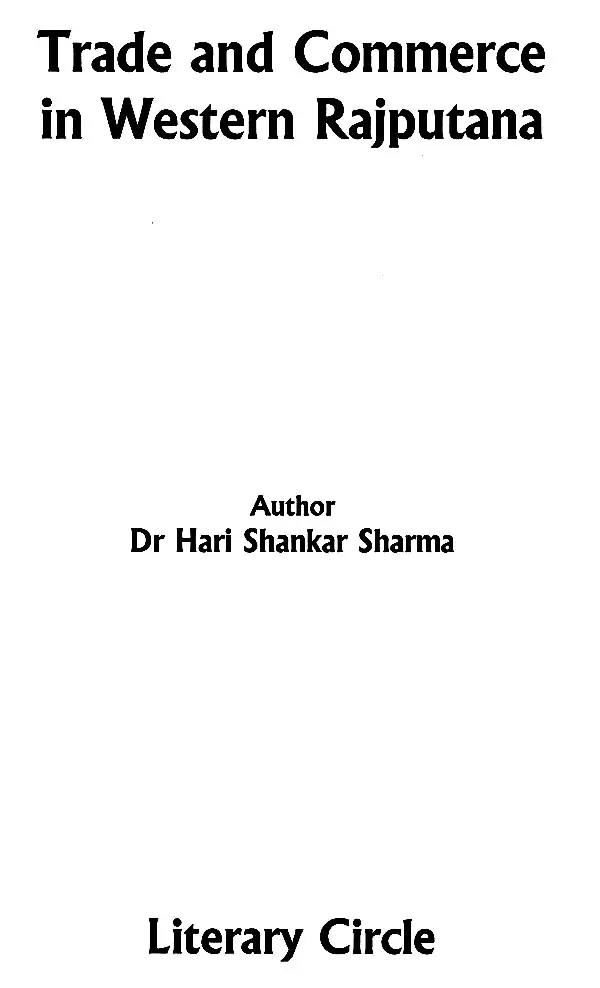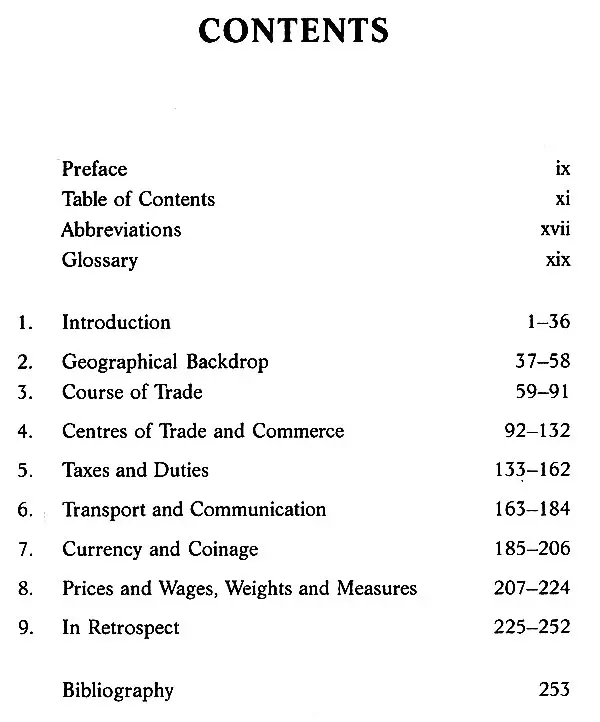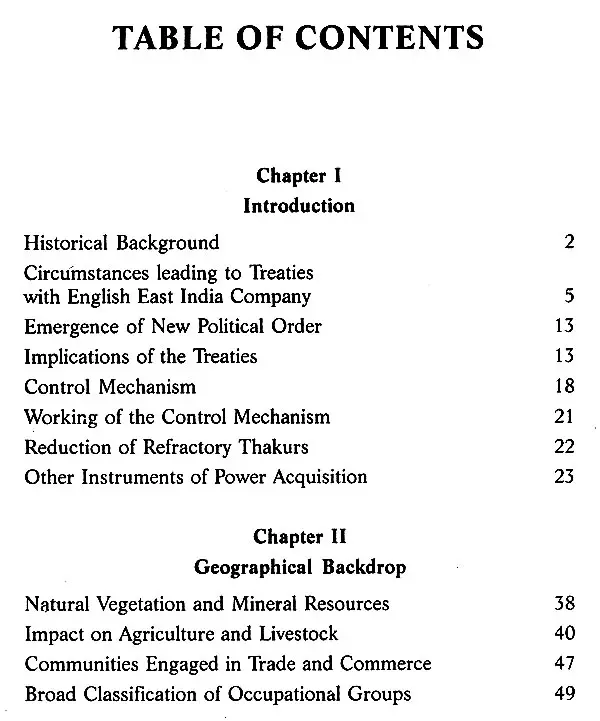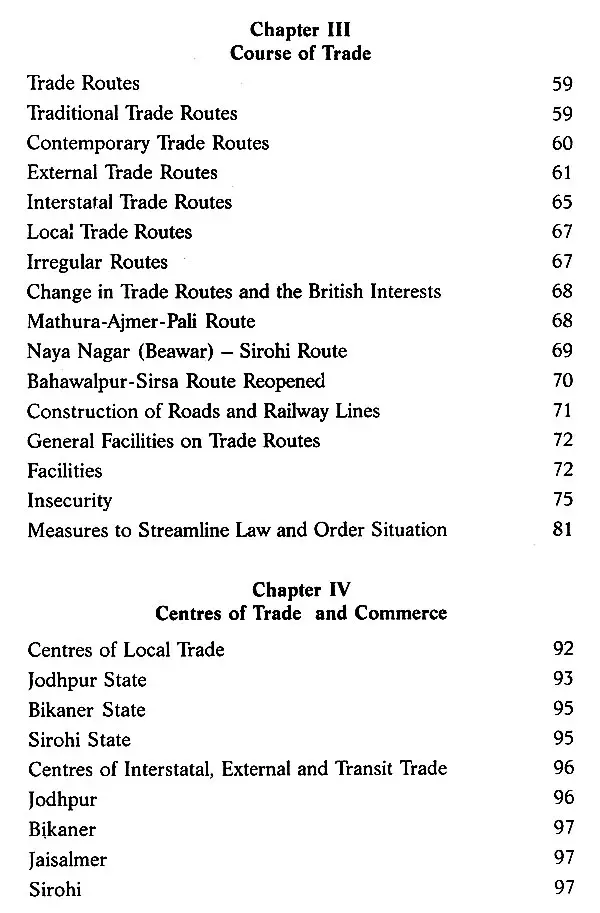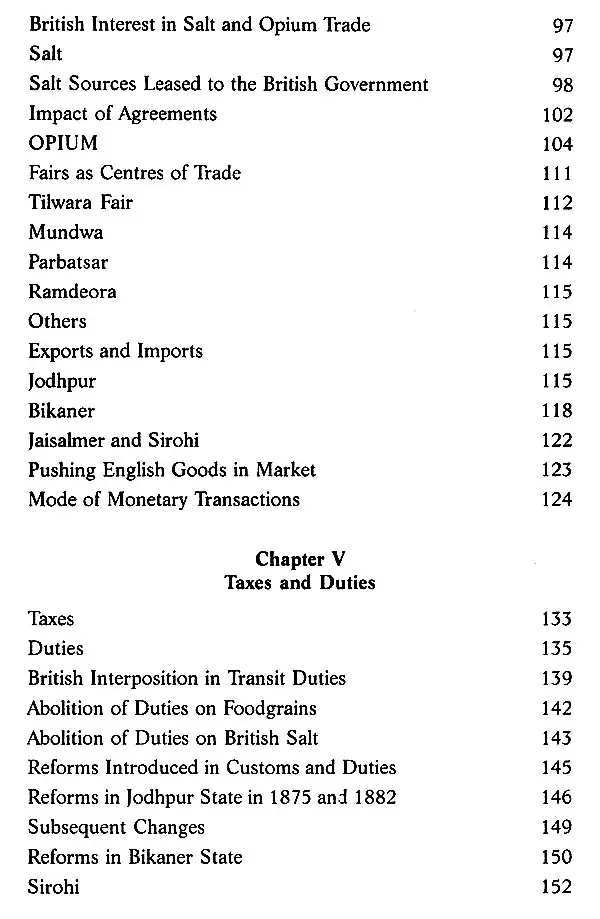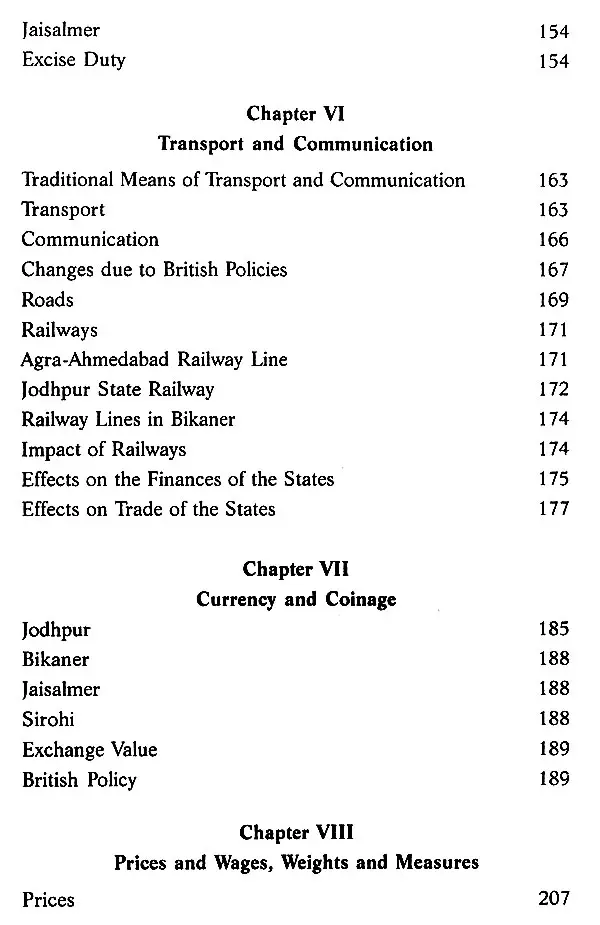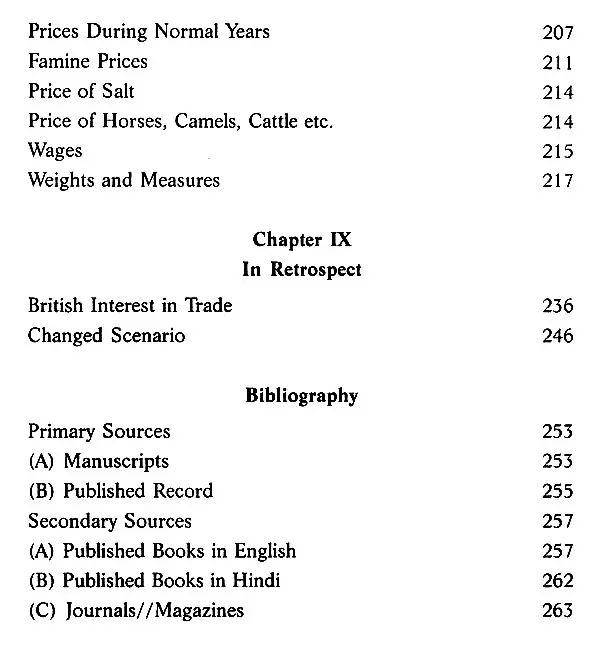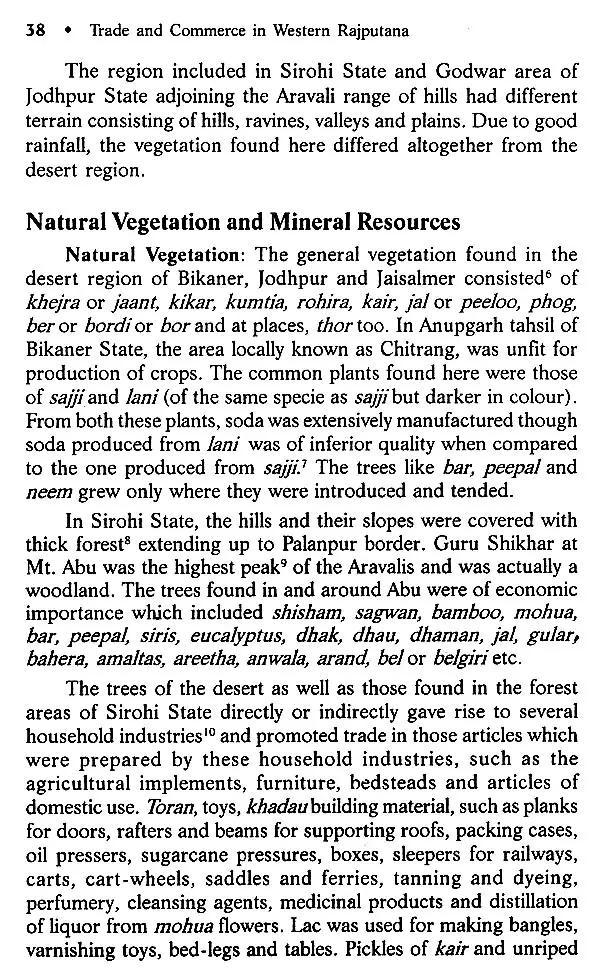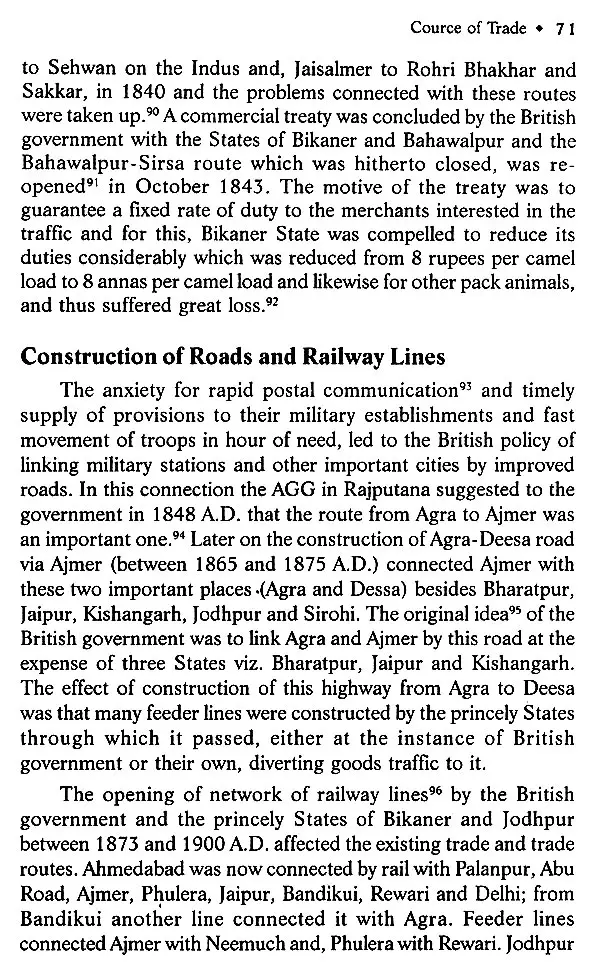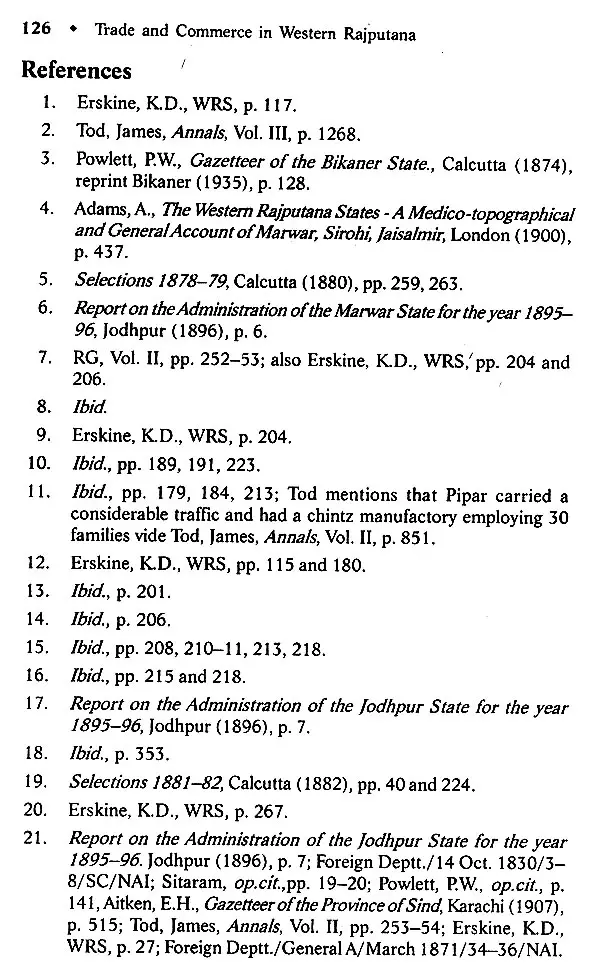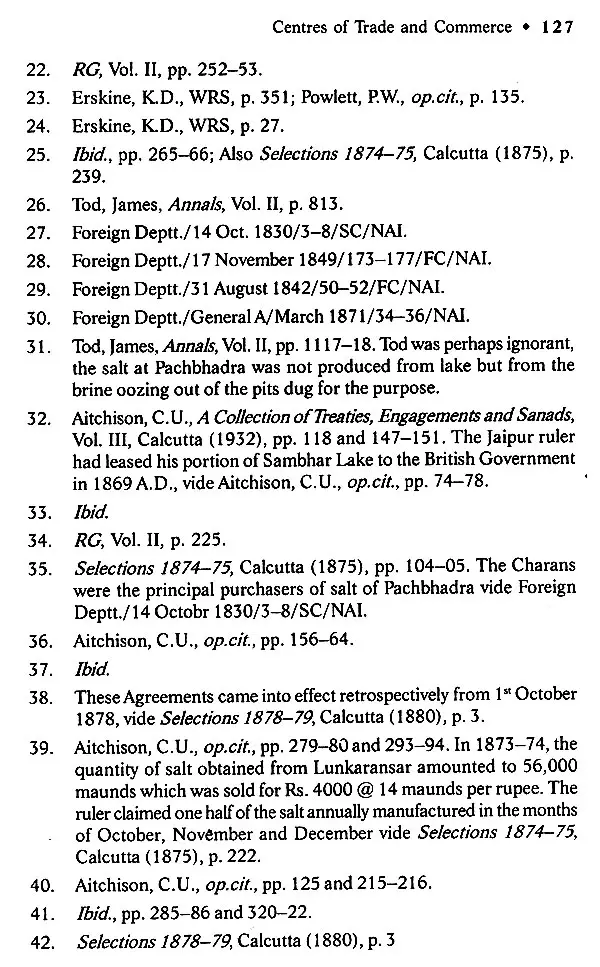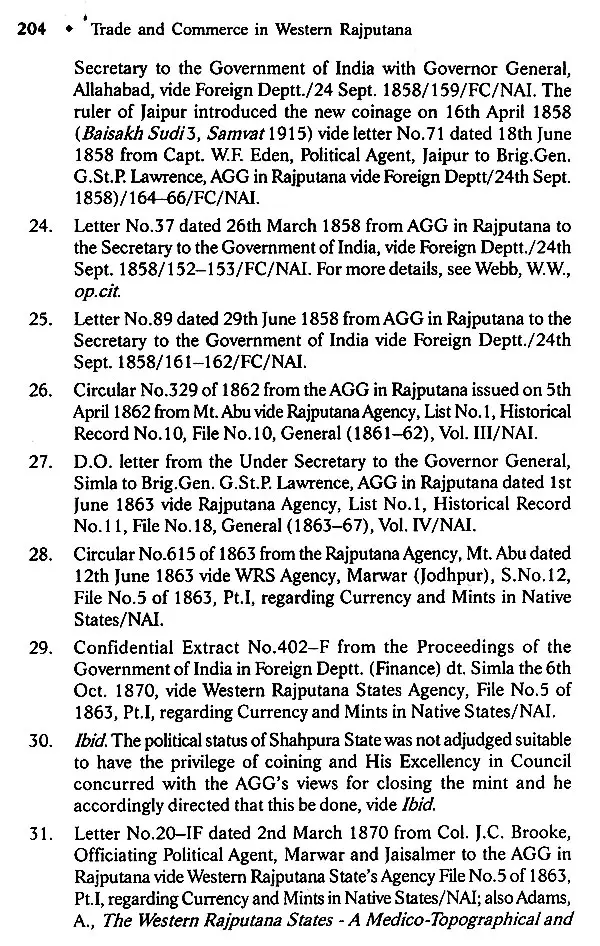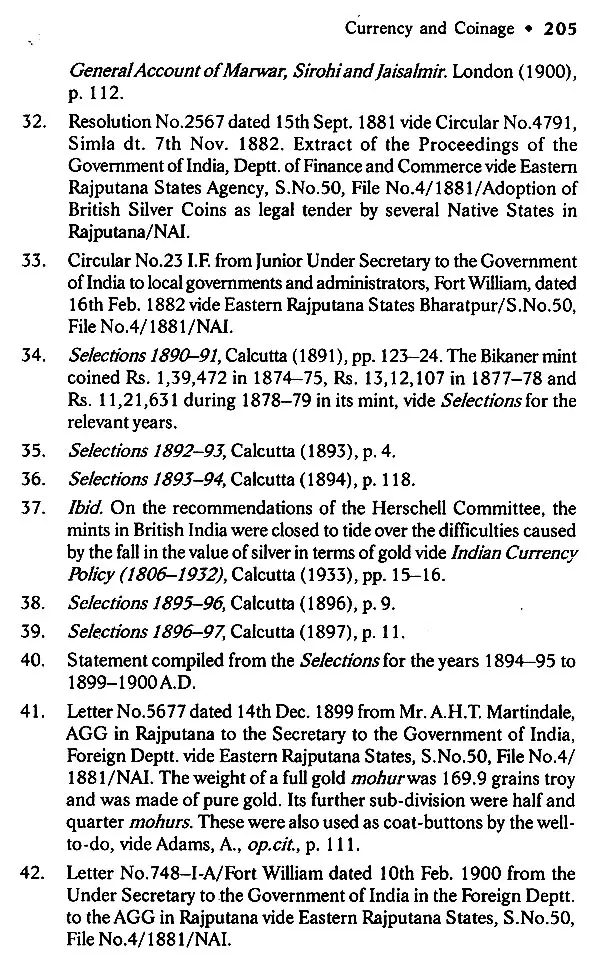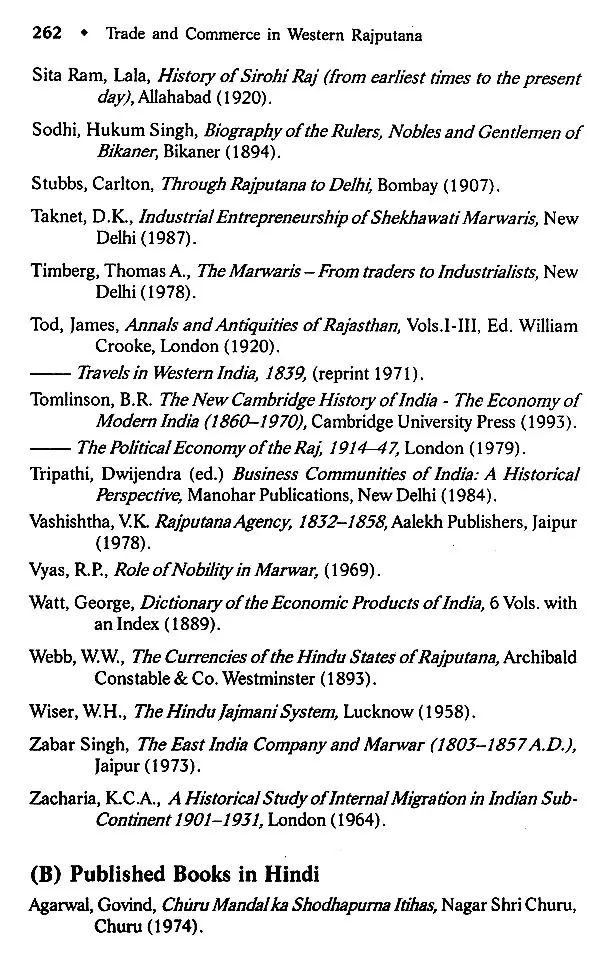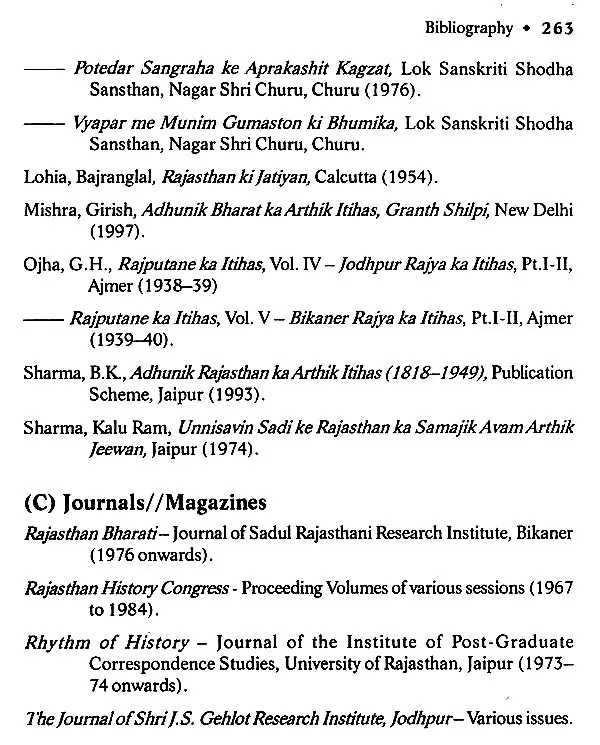
Trade and Commerce in Western Rajputana
Book Specification
| Item Code: | UAF074 |
| Author: | Hari Shankar Sharma |
| Publisher: | Literary Circle, Jaipur |
| Language: | English |
| Edition: | 2017 |
| ISBN: | 9789381951316 |
| Pages: | 263 |
| Cover: | HARDCOVER |
| Other Details | 9.00 X 6.00 inch |
| Weight | 440 gm |
Book Description
The four princely States of Bikaner, Jodhpur, Jaisalmer and Sirohi altogether covered more than half the total area' and over one-fourth of total population of Rajputana in 1901 A.D. which comprised 18 princely States, two chiefships and the British territory of Ajmer-Merwara: three of these, namely, Jodhpur, Bikaner and Jaisalmer constituted its entire north-western border stretching from Punjab in the north and north-east to Bahawalpur State and Sindh on the north-west and west respectively. ³
In area, Jodhpur was the largest of all the States of Rajputana and its boundary touched' nine adjoining principalities including Bikaner, Jaisalmer and Sirohi besides the British territory of Ajmer-Merwara. On the north, it was bounded by Bikaner; on the north-west by Jaisalmer; on the west by Thar and Parkar districts of Sindh, on the south-west by the Rann of Cutch; on the south by Palanpur and Sirohi, on the south-east by Udaipur, on the east by the British territory of Ajmer-Merwara, and by Kishangarh; and on the north-east by Jaipur.
Bikaner was the second largest State in Rajputana forming its northern most boundary. It was bounded' by Bahawalpur on the north-west; by Jaisalmer on the west, by Jodhpur on the south; by Shekhawati district of Jaipur on the south-east; by Loharu and Hissar on the east, and by Firozepur on the north-east.
Jaisalmer was the third largest State and was bounded by Bahawalpur on the north; by Shikarpur district of Sindh and by Khairpur on the west; by Jodhpur on south-east and by Bikaner on the cast.
Sirohi, which ranked" eleventh in area among the various States of Rajputana, was bounded" by Jodhpur on three sides, namely, north-cast, north and north-west; by Palanpur and Danta on the south; by Idar on the south-east; and by Udaipur on the cast.
Peculiar geographical situation of the western Rajputana States coupled with existing unstable conditions, led the people of the region to pursue trade and commerce for their livelihood and also to generate income as revenue for the State coffers.. Rajputana of nineteenth century which later on came to be known as Rajasthan, included eighteen small kingdoms or princely States or Rajwarras as they were called in popular parlance. It also in cluded two chiefships and the British district of Ajmer-Merwara. The States were independent entities and enjoyed semi-sovereign status in their respective domains and wore manifestations to that effect; they maintained their own militia, declared war and con cluded peace, protected the protege, minted coins and issued cur rency, levied taxes, cesses and duties, their relations with the Mughal emperor were regulated according to the traditions of the rulers in each case and the exigencies of the situation.
Rajputana was barren land in general and its north-west segment in particular where the soil was sandy, unwatered and un productive. The States of Bikaner, Jodhpur and Jaisalmer were located in this segment. Agriculture was unremunerative. Therefore, the income to the State from land revenue was insignificant. Luckily several trade-routes passed and diverged through these States connecting them with adjoining States and further with Sindh on the one side and Ahmedabad on the other. Caravans with convoys of merchandize frequented these routes whereby giving the States opportunity to levy taxes and transit duties which formed the main source of State income.
In 1817-18 A.D. and thereafter, treaties between the English East India Company and these States were concluded whereby the latter bound themselves to act in subordinate cooperation with the British government. This was the beginning of interference in the internal administration of the States which increased day by day.
The British officers' interest in trade brought them in conflict with the State officials from whom they demanded concessions in duties and other favours. They also came in close clash with the native traders. The British monopoly over opium and salt trade further led to differences. There was no secret that the high British officers offered costly gifts to the rulers or State officials to grab trade concessions and to push goods in Indian markets. The old marts at Pali, Rajgarh and elsewhere were ignored and new marts like the one at Beawar were favoured for the benefit of British trade. The native traders worked with much disadvantage vis-a-vis British traders.
**Contents and Sample Pages**
